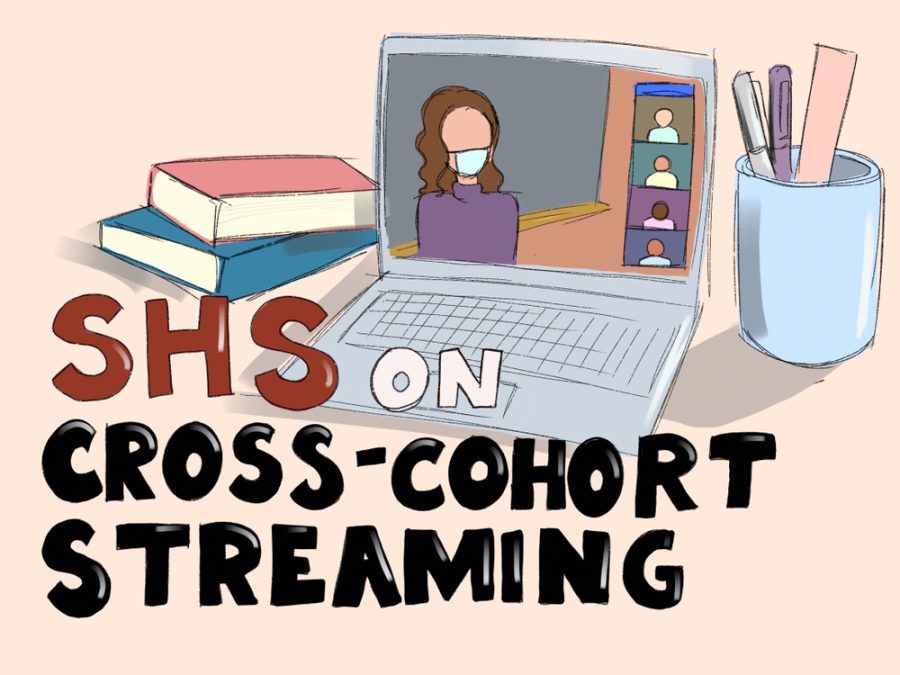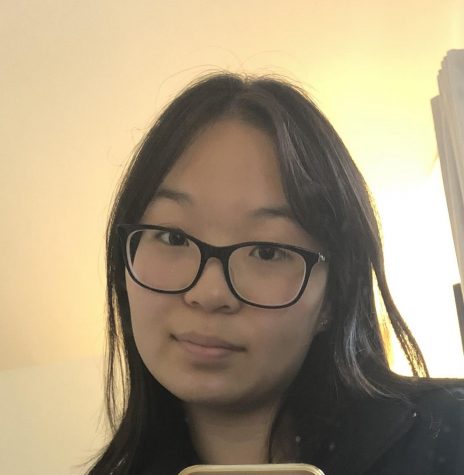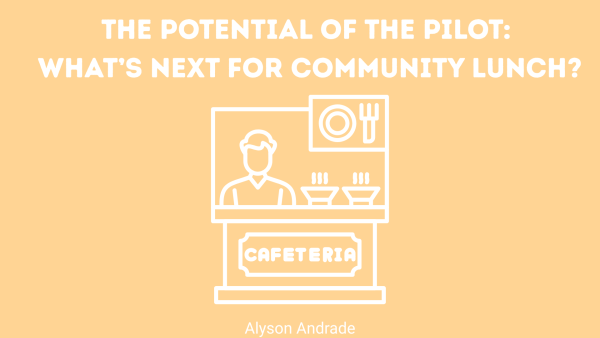A Reflection on Cross Cohort Streaming
Scarsdale Schools have been testing out cross cohort streaming since late October.
Throughout the early weeks of October, rumors about cross-cohort streaming circulated throughout SHS. Although many hoped these rumors weren’t true, on October 15, Principal Bonamo sent an email confirming these speculations. In his email, he announced a plan for teachers to teach students from both cohorts at once through in-person contact and zoom, which would effectively eliminate previously free mornings.
On Tuesday, October 19, the Scarsdale Board of Education met at SHS to discuss the possibility of cross-cohort streaming. At the meeting, the board of education opened up the floor to the general public to convey their opinions on cross-cohort streaming. The majority of students who spoke strongly advocated against the plans for cross-cohort streaming, and voiced concerns such as too much screen time, burnout, and the ineffective nature of zoom learning. Many juniors and seniors spoke out about their early impressions of cross-cohort streaming and expressed their dismay for the Board of Education’s choice to implement a schedule that one student, senior Sophia Liu, remarked was not “humane.”
As of the adjournment of the board of education meeting, no definitive action for or against cross-cohort streaming had been passed. However, cross-cohort streaming soon after began its trial period. In late October, schools throughout the district implemented a cross-cohort streaming policy where students zoom into in-person classes when their respective cohort is not meeting. Though it has only been a few weeks, some of the dire predictions that students and teachers had warned about have come true. “Most of my teachers have been doing cross-cohort streaming these couple of weeks. It’s a lot of repetition and…I don’t really feel as though my learning experience has improved as a result of these extra synchronous times. But, I do find that I’m on the computer a lot more, almost 10 hours a day, when almost all my teachers implement cross-cohort streaming,” said Tal Blaustein ‘22.
A common justification for cross-cohort streaming is that the benefits of additional synchronous learning time vastly outweigh any disadvantages. As of now, Scarsdale is among the districts with the least synchronous learning time in Westchester County. However, students argue that any lost synchronous time is replaced with asynchronous assignments. “I find that if they have us doing asynchronous work and letting us learn some material on our own [was] more effective than meeting every day on these zooms and getting lectured [on] cameras. [That] definitely takes away some of the joy of learning,” reported Blaustein.
Another argument for cross-cohort streaming is that it demarginalizes all virtual students by directing the teacher’s attention to improving the virtual experience. Karl Li ‘23, an all-virtual student, elaborates that “due to the technical difficulties revolving zoom, all-virtual students are unable to hear their peers in class and have a harder time seeing whiteboards.” With more people behind screens, teachers may feel more inclined to ask for better microphones or better camera equipment, which can improve the virtual experience. However, having more zoom students during class periods may result in teachers giving less attention to individual all-virtual students. “Honestly, I personally find that interactions with the teacher are the most important experiences in school. Hence, a good student to teacher ratio improves students’ understanding of a topic. However, in a covid learning environment, our interaction with teachers is significantly decreased and adding more students in a new format only increases the problems teachers have to deal with,” Li states. In addition to these concerns, all virtual students will likely feel the worst consequences of extended hours on a screen. While hybrid students only get 6 hours of zoom a day for 2 days a week, all virtual students will have that schedule for four days a week.
Students aren’t the only ones who have been grappling with the effects of the cross-cohort system. In recent weeks, accusations that Scarsdale teachers do not have the students’ best interests in mind have been disheartening to teachers who have worked hard to remodel their lesson plans and adapt their curriculum to the present circumstances. David Wixted, President of the Scarsdale Teachers Association, notes that “[…] in spite of laboring in modes that are unfamiliar, the work teachers are creating is deep, rich, and significantly advances students through curricula. Teachers are always striving to provide students with learning that leverages the live instruction they receive with the work they do asynchronously. […] in this unfamiliar and challenging modality, teachers are sacrificing their well-being and commitments within their personal lives so as to provide the education their students deserve […]” In addition to the complications that have arisen as a result of trying to structure hybrid lessons, the new push for simultaneously teaching both in-person and online students has thrown in even more confusion and frustration for teachers. Wixted reflected that “the primary impact that cross-cohort streaming has is that it requires a division of attention across distinct groups of students attending the class. […] Teaching becomes a juggling act of engagement, occurring both through physical and digital space. This divided attention coupled with technology challenges can have the effect of increasing the stress everyone involved is feeling.”
While the trial period for cross-cohort streaming has nearly come to an end, the future of learning for Scarsdale students still remains ambiguous. Yet one thing remains clear: “The best way to improve the schedule is through a collaborative decision-making process that establishes models for instruction, provides sufficient time for students and teachers to achieve a degree of proficiency, thoughtfully gathers data about the experiences, and provides defined moments for reflection and iteration,” wrote Wixted. There will inevitably be lengthy deliberation and disagreement over what a good schedule would look like, but the only way to take steps forward is to maintain cooperation between everyone impacted in the community.











